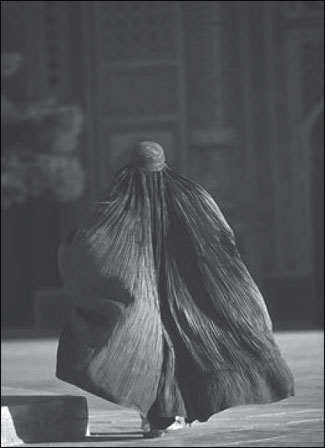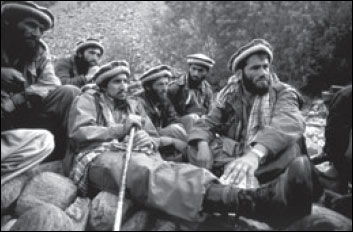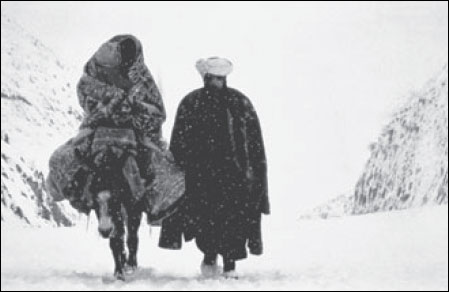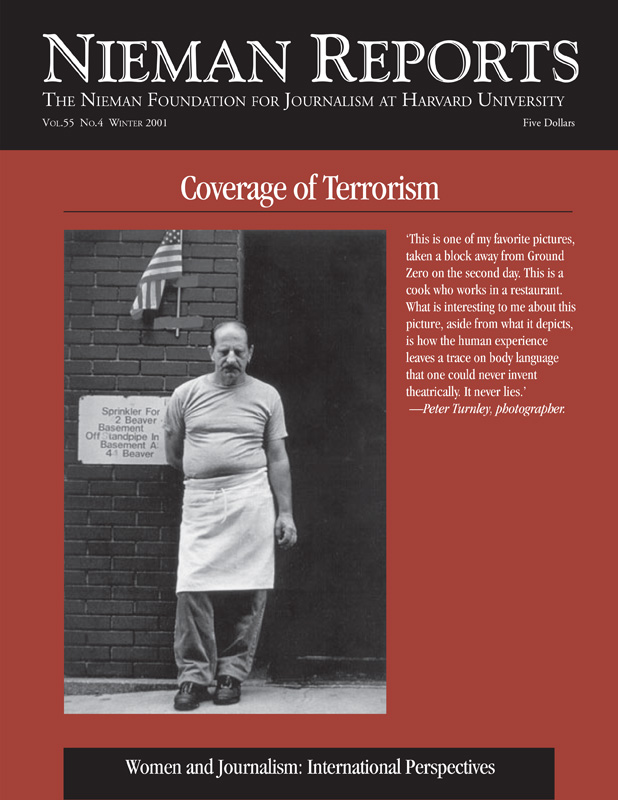
A woman in a burka walks near a mosque in Mazar-i-Sharif. 1990. Photo by Reza/Webistan.©
On his journeys to Afghanistan, Iranian photographer Reza used his camera to document the life and times of General Ahmed Shah Massoud, the Northern Alliance leader who was assassinated on September 9, 2001. In 1985, Reza encountered Soviet army attacks in the snowy mountainous pass that first led him into Afghanistan. Five years later, he rode on a tank with Massoud as his forces entered Kabul. And earlier this year, Reza returned to Afghanistan with author Sebastian Junger, who wrote about Massoud. Reza’s images convey a sense of beauty otherwise hidden by the harshness of war. In a career that has spanned 20 years, Reza has worked as a contract photographer with Time, Life and National Geographic, and as an Iranian correspondent for Sipa Press during the 1979 hostage-taking at the American Embassy and during the Iranian-Iraqi war.

Massoud (third from left) is surrounded by close advisors. May 1985. Photo by Reza/Webistan.©

Exodus from Afghanistan. January 1990. Photo by Reza/Webistan.©



